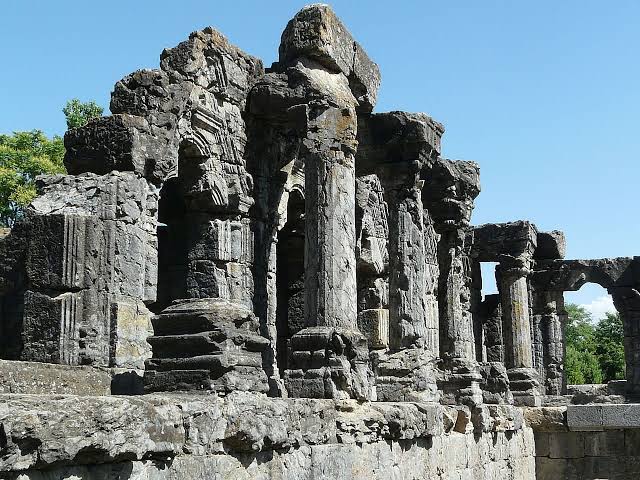Why to visit Martand Sun Temple
Travelers are drawn to this location by the stunning architecture and charmingly retro atmosphere. In the 7th and 8th centuries, the Martand Sun Temple was built.
The Temple Complex is so alluring that it has been used as the backdrop for some illustrious undertakings. Aandhi and Haider, two Bollywood blockbusters, were among the films that were filmed here.
The Martand Sun Temple's design :-
•The complex is regarded as a fine example of Kashmiri-Hindu architecture, with elements from the Gupta, Gandharan, Syrian, Chinese, Roman, and Greek cultures masterfully melded throughout the temple complex.
• The fascinating facility has an entrance on its western side and covers a space of 32,000 square feet.
• There is a tank-like structure with descending stairs in the centre of the compound and a smaller antechamber of the main shrine is embellished with detailed sculptures of Lord Vishnu, Ganga and Yamuna (goddess of river), and Surya (Sun God).
The main shrine must have had a structure centuries ago before it was demolished, and archaeologists have attempted to recreate that impression. The main shrine is thought to have had a pinnacle in the shape of a pyramid, which is typical of Kashmiri temples.
The ruined temple complex has been made accessible to visitors by the Indian government. As a monument with national, historical, and architectural significance, it is managed by The Archaeological Survey of India (ASI).
Lalitaditya, the third king of the Karkota Dynasty, was responsible for the construction of the temple complex. The entire complex was constructed on the summit of a plateau close to Anantnag, and the building is made of limestone.
In India's celestial state of Jammu and Kashmir, Martand Sun Temple is located more than five kilometres away from Anantnag. This building, a Hindu temple in Kashmir, is regarded as one of India's most magnificent constructions in history.















